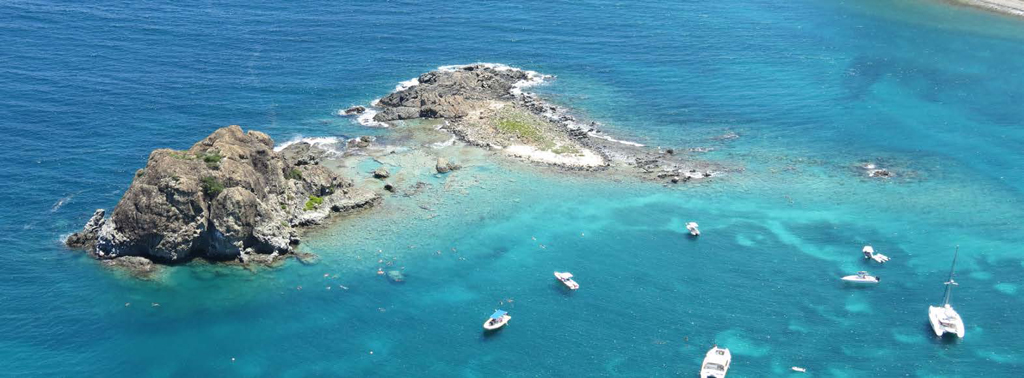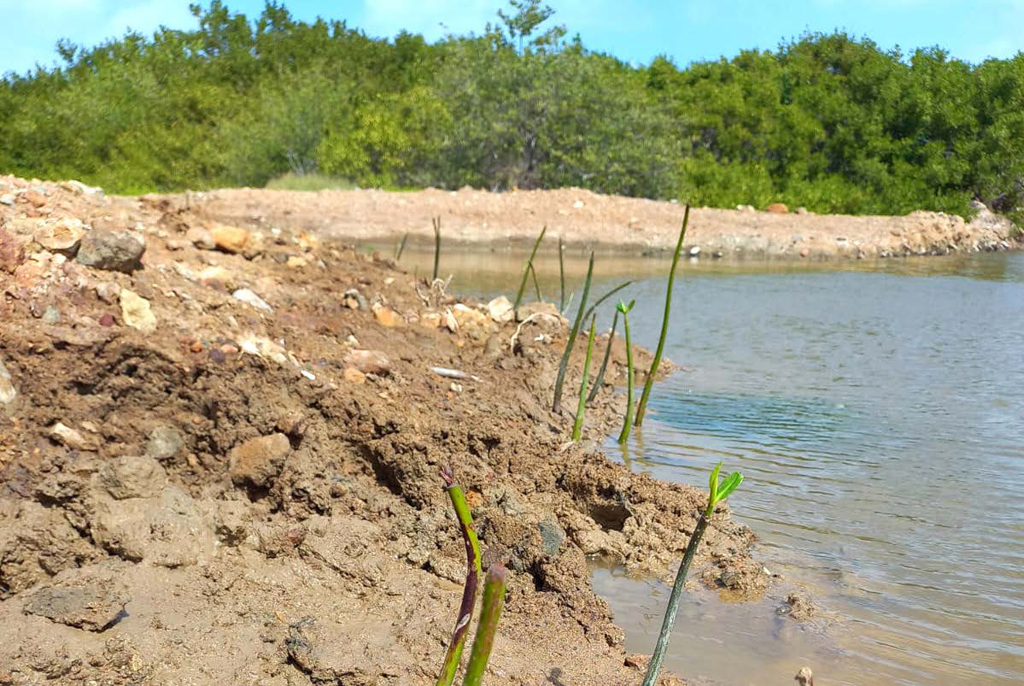Action CS3 – Develop and test coral reef rehabilitation and associated species (priority 2)
Action IP6 – Contribute to the rehabilitation of coral reefs and seagrasses.
Action PR2 – Develop and enhance scientific collaborations (priority 1)
Following a call for projects initiated and funded by the French Biodiversity Office (OFB) to mitigate the anthropogenic pressures experienced by coral reefs, seagrasses, and mangroves, the ReCorEA Saint Martin project is led by the nature reserve, with Clément Bonnardel at the helm. This ambitious project also relies on financial support from Atout France and the Veolia Foundation. The work is planned in four phases:
- Updating the mapping by analyzing satellite images, coupled with a sociological survey of users of the area and a quantitative evaluation of nautical frequentation in the reserve.
- Reviewing and strengthening the mooring park for regulated uses.
- An assessment of the project’s impacts by monitoring the health of the beneficiary ecosystems.
- Support for the emergence of eco-responsible behaviors, by setting up public awareness actions and for schools, as well as the animation of participatory restoration workshops, for the conservation of mangroves.
At the end of the year 2023, the data collected in the field by the reserve has enabled the artificial intelligence, developed by their service provider iSea, to learn to recognize and map natural habitats from satellite images. A working version was delivered at the end of the year. This first draft requires corrections to better discriminate between the different types of environments selected by the partners. The analysis of these same satellite images also allows for the identification of the areas most frequented by boats and to know their size. These pieces of information will be essential to develop proposals for the architecture and sizing of the future mooring strategy in the reserve. In parallel, about a dozen maritime professionals shared their opinions with Clément Bonnardel regarding the infrastructure already present in the reserve. Where are there moorings? Do they use them? Do they consider them safe? Do they meet their needs? The survey continues among professionals, but also recreational boaters and institutions like the DEAL, the Directorate of the Sea, or the Gendarmerie Nautical Brigade. The beginning of the deployment of the new park is planned for the summer of 2024. The analysis of the satellite images also produced interesting results regarding the delineation of the coastline, by allowing the comparison of aerial photos dating from February 2017 with images taken in January 2023. Defined by the limit of vegetation or constructions, this coastline has receded by about thirty meters at some sites, but also advanced by a few meters at some rare others.
As part of the ReCorEA Saint Martin program, the replanting of mangrove seedlings from the reserve’s nursery continues around the Saline d’Orient and the Fish Pond, notably with the “educational marine areas” classes, or on the site of the “Mangrove Nursery” project by AGRNSM agents, but also thanks to the commercial company Seagrapes Tours, which invites its tourist clients to participate in the restoration of the mangrove. In parallel, 33 “eco-delegate” students from the Robert Weinum high school were made aware of the fragility of coral reefs, seagrass beds, and mangroves during a visit between the Grandes Cayes beach, the mangrove nursery, the Saline d’Orient pond and the Embouchure bay. The next step of the project will be the implementation of a mangrove monitoring protocol, in connection with the tropical wetlands hub of the French Committee of IUCN, at the beginning of the year 2024.


















